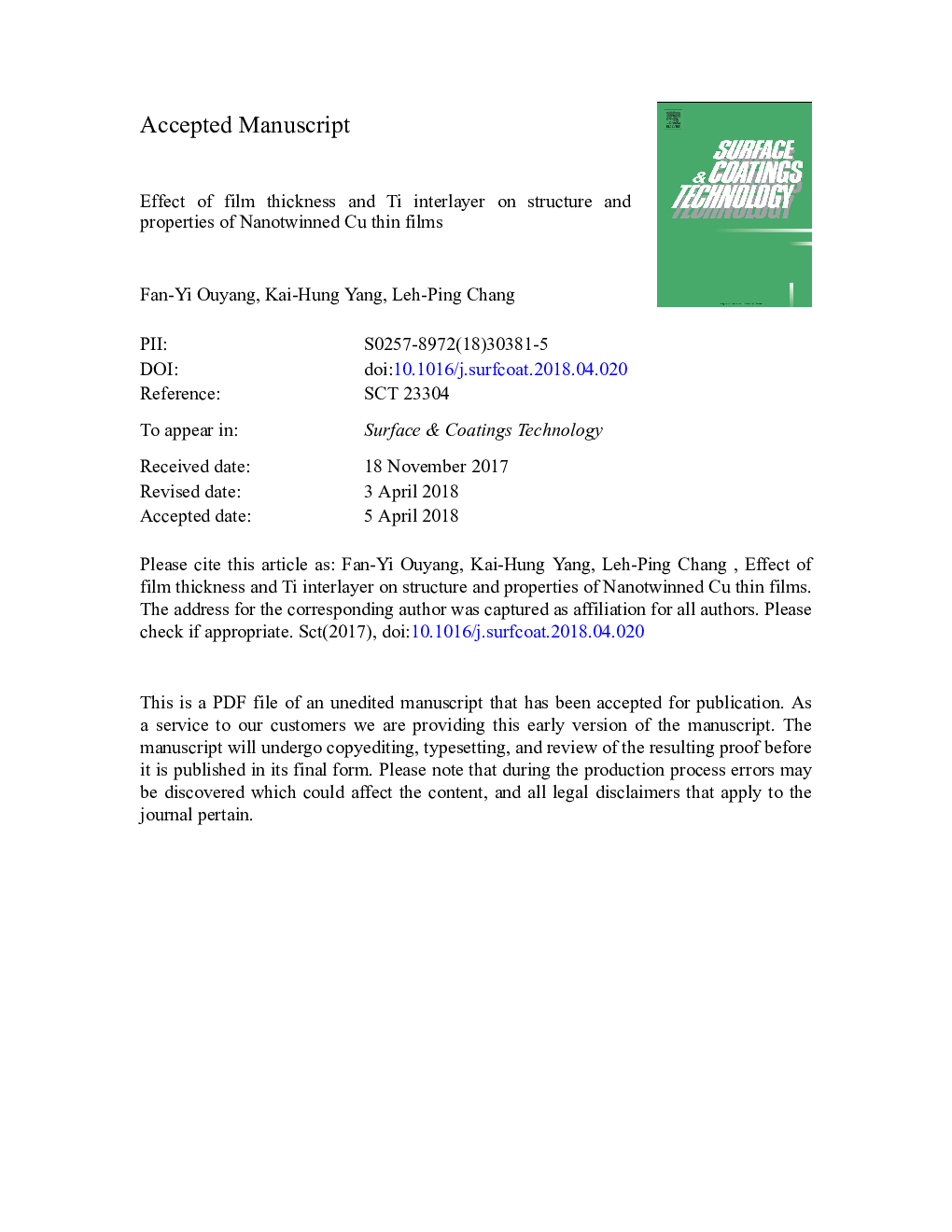| Article ID | Journal | Published Year | Pages | File Type |
|---|---|---|---|---|
| 8023290 | Surface and Coatings Technology | 2018 | 31 Pages |
Abstract
Nanotwinned Cu thin films were fabricated on Si (100) substrate by using unbalanced magnetron sputtering (UBMS) system with deposition rate of 0.6â¯nm/s and 1.4â¯nm/s, respectively. The effect of film thickness and Ti interlayer on microstructure, resistivity and hardness of the films was investigated. The results show that (111) is the dominant preferred orientation in the Cu films for different thickness and the Ti interlayer would facilitate the growth of Cu (111). There is a critical thickness, between 461â¯nm and 600â¯nm, at which the stress can effectively relieved to form twin. When the film thickness is above 600â¯nm, the twin structure with angles of 70.5 or 54.7 between twin boundary and substrate surface was formed first; however, with further increase of film thickness, most twin boundaries were found to be parallel to the substrate. The hardness of the Cu thin films ranges from 2.0 to 3.2â¯GPa and was only dependent on film thickness for low-deposition-rate group. The resistivity of Cu thin films, ranging from 1.96â¯Ãâ¯10â8â¯Î©Â·m to 2.77â¯Ãâ¯10â8â¯Î©Â·m, slightly decreases as film thickness increases for specimens deposited at 0.6â¯nm/s, but did not significantly change with respect to film thickness with deposition rate of 1.4â¯nm/s.
Related Topics
Physical Sciences and Engineering
Materials Science
Nanotechnology
Authors
Fan-Yi Ouyang, Kai-Hung Yang, Leh-Ping Chang,
